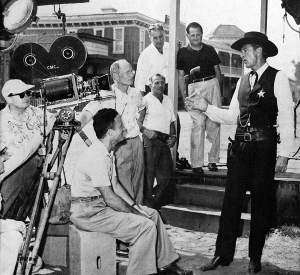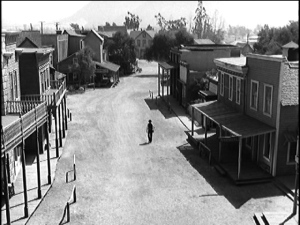Richard Zampella: Why study and focus on Classic Hollywood?
“Study the Past if you wish to Define the Future”
Discussions with John Mulholland
Having a singular vision and unique passion: To bring back into the mainstream the legendary entertainment names of yesteryear – actors, directors, writers, producers defining for contemporary audiences both why and how these remarkable legends are still relevant in our fractious, highly charged and diverse world.
Classic Hollywood matters.
Yes, it’s been covered, exhaustively so; seven ways from Sunday, as they say.
And, certainly, it is well known indeed to its ‘ limited (read: aging) audience. Those fabled stars, those legendary directors, producers, writers, editors, cinematographers, what possibly can they have to do with today? With CGI, hyper-editing, Imax, sex, violence, slasher, computer animation, the net, hell, the sheer global breadth of pop culture, what matters classic Hollywood?!?
Well, how about, say, without John Garfield, there’d be no DeNiro?
Watch Meg Ryan, Anne Heche or Reese Witherspoon, then watch Jean Arthur, Carole Lombard or Irene Dunne.
Want to understand whence came Pacino? Watch Cagney.
Meryl Streep? Bette Davis.
Without Gary Cooper, would there be Clint Eastwood (Who once asked his friend and biographer, Richard Schickel: “Think I’m Coop?”)?
And while we’re on Eastwood, check out his stately pacing as director, then watch the works of Fred Zinnemann, William Wyler and George Stevens.
Today’s feisty independent women – Angelina Jolie, Catherine Zeta Jones and Renee Zellwigger – are direct descendants of Barbara Stanwyck, Joan Crawford and Myrna Loy.
And speaking of Stanwyck, what are femme fatales Kathleen Turner (Body Heat) and Linda Fiorentino (The Last Seduction) but mirrors of Stanwyck’s double-dealing femme fatale in Double Indemnity?
Check out 1957’s Zero Hour, and then watch Airplane.
Notting Hill = Roman Holiday.
Watch Gene Hackman, watch Spencer Tracy.
Gangsters: Before The Godfather I and II, there were Public Enemy, Roaring Twenties and White Heat.
Musical bios: Yankee Doodle Dandy and Walk The Line, while cultivating the same territory, both reflect the times they were made.
Before the remarkable Hugh Jackman, there was the remarkable Gene Kelly.
Without cinematographers Floyd Crosby and Ted McCord, would Jack Green and Janusz Kaminski be the artists they are?
Conjure up a John Williams score and then listen to the works of Dimitri Tiomkin, Victor Young and Miklos Rozsa.
Trend setters in fashion? Familiar with Katherine Hepburn, circa 1934?
Do films reflect their times? Watch 1940’s Pride And Prejudice and 2005’s Pride And Prejudice. Or, measure War Of The Worlds 1953 against War Of The Worlds 2005. To understand the existential urban loner of 2007, just watch Bogart from the 1940s. Want to define courage and masculinity in the face of impossible odds, 1952’s High Noon nails it like nothing else. How do we feel about war – Sands Of Iwo Jima (1949) vs. Flags Of Our Fathers/Letters From Iwo Jima (2007). To understand where the U. S. was in the late 30s, early 40s, with isolationists battling interventionists, study the making of 1941’s Sergeant York. Both versions of The Manchurian Candidate (1962, 2004) contain the same basic plot, yet both are crystal-clear reflections of the times they were made.
What do Scarface (32) and Scarface (83) say about who we are, where we are, what kind of world we live in?
Is Johnny Depp’s effete pirate a total original? Or the inevitable next step after Errol Flynn’s dashing Captain Blood in the 30s and Burt Lancaster’s openly comic Crimson Pirate in the 50s?
If today’s stars think they’re the first to be hammered by the tabloid press, perhaps a look at Errol Flynn’s career might enlighten them.
Classic Hollywood matters. Very much.
Producing documentaries on classic films explore why – seven ways from Sunday. For in exploring that so-called Golden Era from a refreshingly original prism of vision, through various comparisons and idea also offer a fresh POV on today’s complex global era.
Richard Zampella, Preserving history
Film Documentaries:
Sergeant York: Of God and Country Narrated by Liam Neeson
Inside High Noon Narrated by Frank Langella










